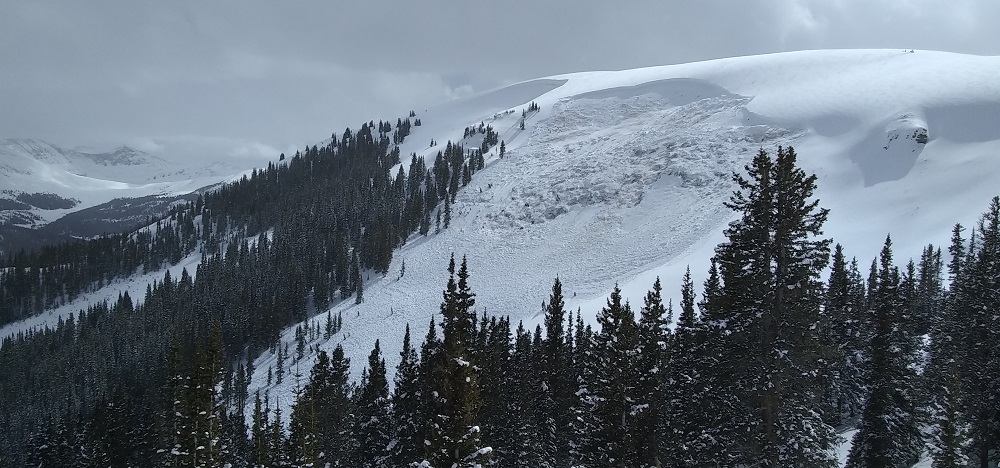Governor Jared Polis issued a Safer-at-Home order on April 27, 2020. Coloradans can participate in outdoor recreation while wearing a mask, maintaining a distance of at least six feet, with no more than 10 people, and choosing a location that is within 10 miles from their home. These steps will help us slow the transmission of the virus and maintain healthy activities that strengthen your physical and mental health.
Many of Colorado’s counties have issued public health orders that affect travel and recreation. You can find information from Colorado’s counties here. Please respect all state, county, and local health travel orders when considering backcountry recreation.
If you are recreating, please do so responsibly. This includes following the Safer-at-Home guidance, not taking actions that risk pulling emergency service workers away from the important work they’re doing, or compromising their ability to continue that work. You can find more information from the Department of Natural Resources here.
“Our goal at the CAIC is to provide critical avalanche safety information for people recreating in the Colorado mountains, government groups at all levels, and CDOT as they work to mitigate the avalanche hazard above the State’s transportation system. We understand how important outdoor activities are for people’s mental and physical health in these uncertain times. We want people to be safe and responsible in all of their outdoor pursuits” says CAIC Director Ethan Greene.
The Colorado Avalanche Information Center will continue to provide daily weather and avalanche forecasts to support emergency services, increase safety on state and federal highways, and provide good information to help people if they choose to travel in the backcountry.
Please consider the following when deciding whether or not to engage in backcountry travel:
- If you are sick, stay home – Follow CDC guidelines and avoid spreading the virus to others.
- Stay close to home – Limit travel to trailheads as much as possible. Use the backcountry areas near where you live. Avoid travel to communities where you are not a resident.
- Know Before You Go
- Know the public health orders that affect your plans. Look at covid19.colorado.gov and check with the local government for any restrictions.
- If you don’t have avalanche rescue gear, avalanche training, and know how to use and interpret the avalanche forecast, do not go in or near avalanche terrain.
- Keep a social distance from others – Maintain the legally-mandated safe distance of six feet or more from other parties.
- Avoid travelling in high-risk and remote terrain and consider avoiding all avalanche terrain – Rescues stemming from avalanche incidents or accidents may require extensive resources. Colorado Search and Rescue teams are prepared and ready to respond, but could become overloaded if the number of calls increases and the number of available responders decreases. Being responsible outdoors can also help prevent additional burdens on our healthcare system.
- Avoid times and places of high use – Avoid creating large crowds and groups at popular trails or outdoor areas. Spread out and avoid times of highest use. Use COTREX to discover and explore other local trails in your area to help disperse traffic.
- Closed ski areas are backcountry – All Colorado ski areas are closed (some still allow uphill travel). The ski patrol is not available for emergency response or rescue. Snow safety teams are not mitigating the avalanche hazard. Conditions at the ski area are not safer than traditional backcountry areas. Travel in them like you are in the backcountry.
- If you go, get the forecast first and tell us what you see when you return home! CAIC is still issuing daily avalanche safety products. With professional operations such as ski areas, cat ski operations, and guide companies closed, the CAIC is missing a crucial source for observations. If you do go into the backcountry, please submit an observation via the web or mobile app. Even if all you have to report is that you did not see any avalanches or that you did not see any signs of instability, please take the time to send that important info!
If you are choosing to recreate in the mountains, a critical thing to remember is that your actions may impact others. We need to balance our risk in the backcountry while considering the consequences should we trigger an avalanche. Do not expose others to risk without their consent. This includes recreating above other people or open roadways. Consider the burden you might place on our already strained search and rescue and health care systems should someone in your group get hurt or worse. Please enjoy the backcountry safely and keep our communities and fellow backcountry tribe members in mind when you consider your terrain choices.
Updated April 29, 2020

Large avalanche near Fremont Pass, March 22 2020
